Noriyoshi Sukegawa
Subset Selection for Stratified Sampling in Online Controlled Experiments
Sep 19, 2025



Abstract:Online controlled experiments, also known as A/B testing, are the digital equivalent of randomized controlled trials for estimating the impact of marketing campaigns on website visitors. Stratified sampling is a traditional technique for variance reduction to improve the sensitivity (or statistical power) of controlled experiments; this technique first divides the population into strata (homogeneous subgroups) based on stratification variables and then draws samples from each stratum to avoid sampling bias. To enhance the estimation accuracy of stratified sampling, we focus on the problem of selecting a subset of stratification variables that are effective in variance reduction. We design an efficient algorithm that selects stratification variables one by one by simulating a series of stratified sampling processes. We also estimate the computational complexity of our subset selection algorithm. Computational experiments using synthetic and real-world datasets demonstrate that our method can outperform other variance reduction techniques especially when multiple variables have a certain correlation with the outcome variable. Our subset selection method for stratified sampling can improve the sensitivity of online controlled experiments, thus enabling more reliable marketing decisions.
Robust personalized pricing under uncertainty of purchase probabilities
Jul 22, 2024



Abstract:This paper is concerned with personalized pricing models aimed at maximizing the expected revenues or profits for a single item. While it is essential for personalized pricing to predict the purchase probabilities for each consumer, these predicted values are inherently subject to unavoidable errors that can negatively impact the realized revenues and profits. To address this issue, we focus on robust optimization techniques that yield reliable solutions to optimization problems under uncertainty. Specifically, we propose a robust optimization model for personalized pricing that accounts for the uncertainty of predicted purchase probabilities. This model can be formulated as a mixed-integer linear optimization problem, which can be solved exactly using mathematical optimization solvers. We also develop a Lagrangian decomposition algorithm combined with line search to efficiently find high-quality solutions for large-scale optimization problems. Experimental results demonstrate the effectiveness of our robust optimization model and highlight the utility of our Lagrangian decomposition algorithm in terms of both computational efficiency and solution quality.
Strategic Coupon Allocation for Increasing Providers' Sales Experiences in Two-sided Marketplaces
Jul 20, 2024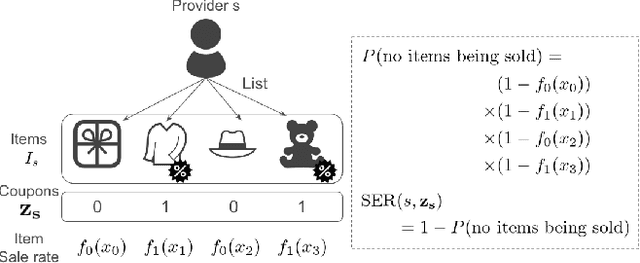
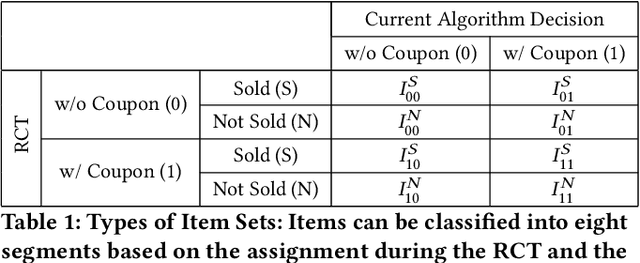
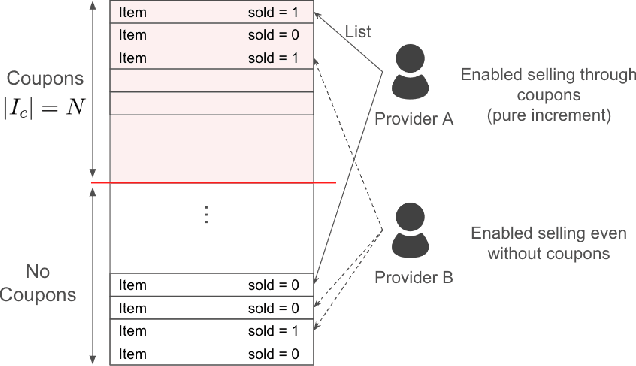
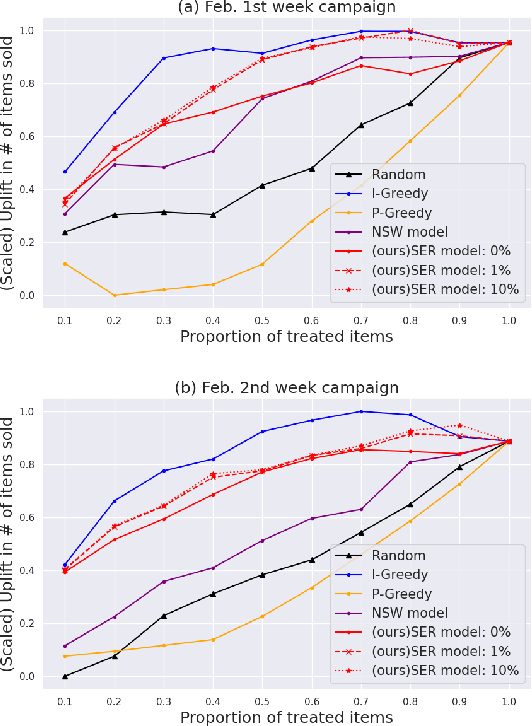
Abstract:In a two-sided marketplace, network effects are crucial for competitiveness, and platforms need to retain users through advanced customer relationship management as much as possible. Maintaining numerous providers' stable and active presence on the platform is highly important to enhance the marketplace's scale and diversity. The strongest motivation for providers to continue using the platform is to realize actual profits through sales. Then, we propose a personalized promotion to increase the number of successful providers with sales experiences on the platform. The main contributions of our research are twofold. First, we introduce a new perspective in provider management with the distribution of successful sales experiences. Second, we propose a personalized promotion optimization method to maximize the number of providers' sales experiences. By utilizing this approach, we ensure equal opportunities for providers to experience sales without being monopolized by a few providers. Through experiments using actual data on coupon distribution, we confirm that our method enables the implementation of coupon allocation strategies that significantly increase the total number of providers having sales experiences.
Fast solution to the fair ranking problem using the Sinkhorn algorithm
Jun 11, 2024


Abstract:In two-sided marketplaces such as online flea markets, recommender systems for providing consumers with personalized item rankings play a key role in promoting transactions between providers and consumers. Meanwhile, two-sided marketplaces face the problem of balancing consumer satisfaction and fairness among items to stimulate activity of item providers. Saito and Joachims (2022) devised an impact-based fair ranking method for maximizing the Nash social welfare based on fair division; however, this method, which requires solving a large-scale constrained nonlinear optimization problem, is very difficult to apply to practical-scale recommender systems. We thus propose a fast solution to the impact-based fair ranking problem. We first transform the fair ranking problem into an unconstrained optimization problem and then design a gradient ascent method that repeatedly executes the Sinkhorn algorithm. Experimental results demonstrate that our algorithm provides fair rankings of high quality and is about 1000 times faster than application of commercial optimization software.
Container pre-marshalling problem minimizing CV@R under uncertainty of ship arrival times
May 27, 2024



Abstract:This paper is concerned with the container pre-marshalling problem, which involves relocating containers in the storage area so that they can be efficiently loaded onto ships without reshuffles. In reality, however, ship arrival times are affected by various external factors, which can cause the order of container retrieval to be different from the initial plan. To represent such uncertainty, we generate multiple scenarios from a multivariate probability distribution of ship arrival times. We derive a mixed-integer linear optimization model to find an optimal container layout such that the conditional value-at-risk is minimized for the number of misplaced containers responsible for reshuffles. Moreover, we devise an exact algorithm based on the cutting-plane method to handle large-scale problems. Numerical experiments using synthetic datasets demonstrate that our method can produce high-quality container layouts compared with the conventional robust optimization model. Additionally, our algorithm can speed up the computation of solving large-scale problems.
Privacy-preserving recommender system using the data collaboration analysis for distributed datasets
May 24, 2024Abstract:In order to provide high-quality recommendations for users, it is desirable to share and integrate multiple datasets held by different parties. However, when sharing such distributed datasets, we need to protect personal and confidential information contained in the datasets. To this end, we establish a framework for privacy-preserving recommender systems using the data collaboration analysis of distributed datasets. Numerical experiments with two public rating datasets demonstrate that our privacy-preserving method for rating prediction can improve the prediction accuracy for distributed datasets. This study opens up new possibilities for privacy-preserving techniques in recommender systems.
Robust portfolio optimization model for electronic coupon allocation
May 21, 2024Abstract:Currently, many e-commerce websites issue online/electronic coupons as an effective tool for promoting sales of various products and services. We focus on the problem of optimally allocating coupons to customers subject to a budget constraint on an e-commerce website. We apply a robust portfolio optimization model based on customer segmentation to the coupon allocation problem. We also validate the efficacy of our method through numerical experiments using actual data from randomly distributed coupons. Main contributions of our research are twofold. First, we handle six types of coupons, thereby making it extremely difficult to accurately estimate the difference in the effects of various coupons. Second, we demonstrate from detailed numerical results that the robust optimization model achieved larger uplifts of sales than did the commonly-used multiple-choice knapsack model and the conventional mean-variance optimization model. Our results open up great potential for robust portfolio optimization as an effective tool for practical coupon allocation.
Predicting Online Item-choice Behavior: A Shape-restricted Regression Perspective
May 24, 2020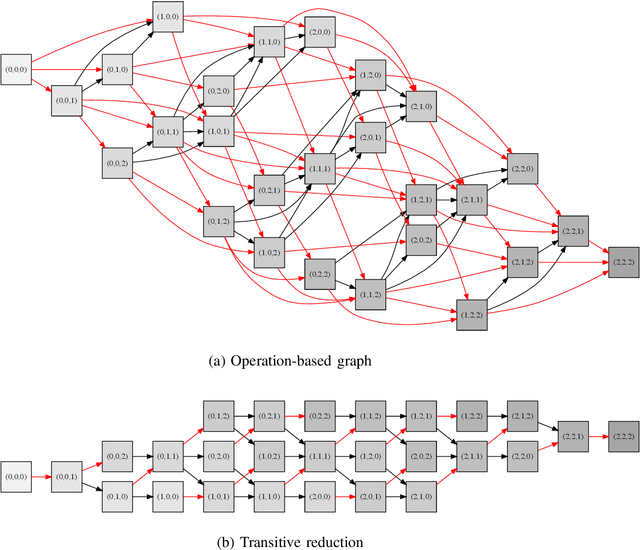
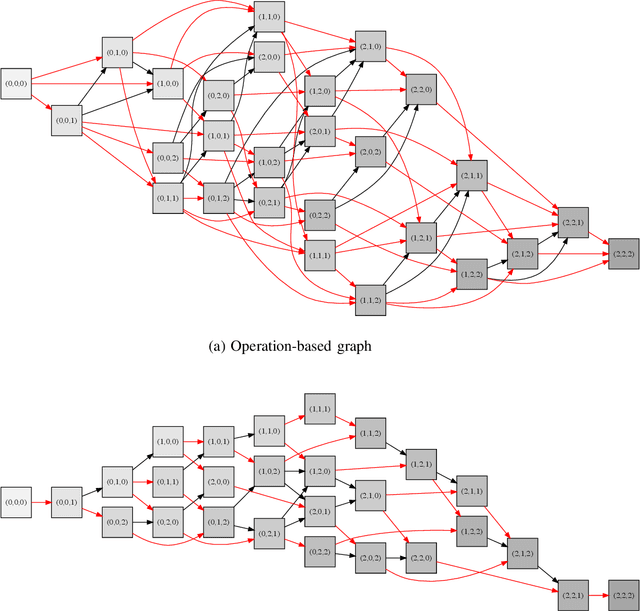
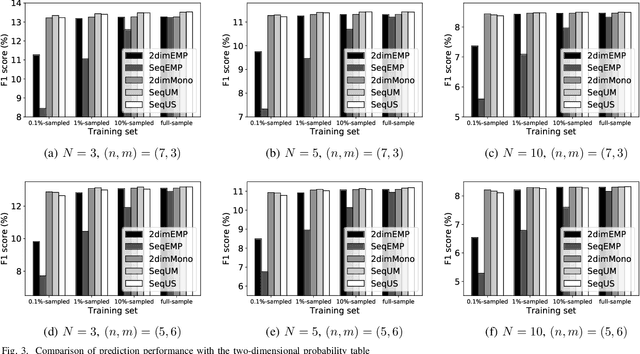
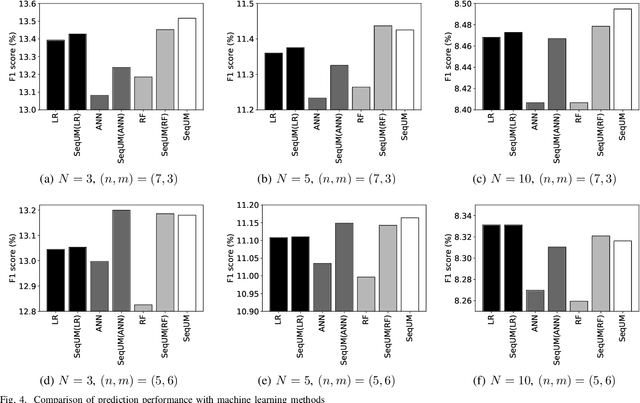
Abstract:This paper examines the relationship between user pageview (PV) histories and their item-choice behavior on an e-commerce website. We focus on PV sequences, which represent time series of the number of PVs for each user--item pair. We propose a shape-restricted optimization model that accurately estimates item-choice probabilities for all possible PV sequences. This model imposes monotonicity constraints on item-choice probabilities by exploiting partial orders for PV sequences, according to the recency and frequency of a user's previous PVs. To improve the computational efficiency of our optimization model, we devise efficient algorithms for eliminating all redundant constraints according to the transitivity of the partial orders. Experimental results using real-world clickstream data demonstrate that our method achieves higher prediction performance than that of a state-of-the-art optimization model and common machine learning methods.
A Latent-class Model for Estimating Product-choice Probabilities from Clickstream Data
Dec 20, 2016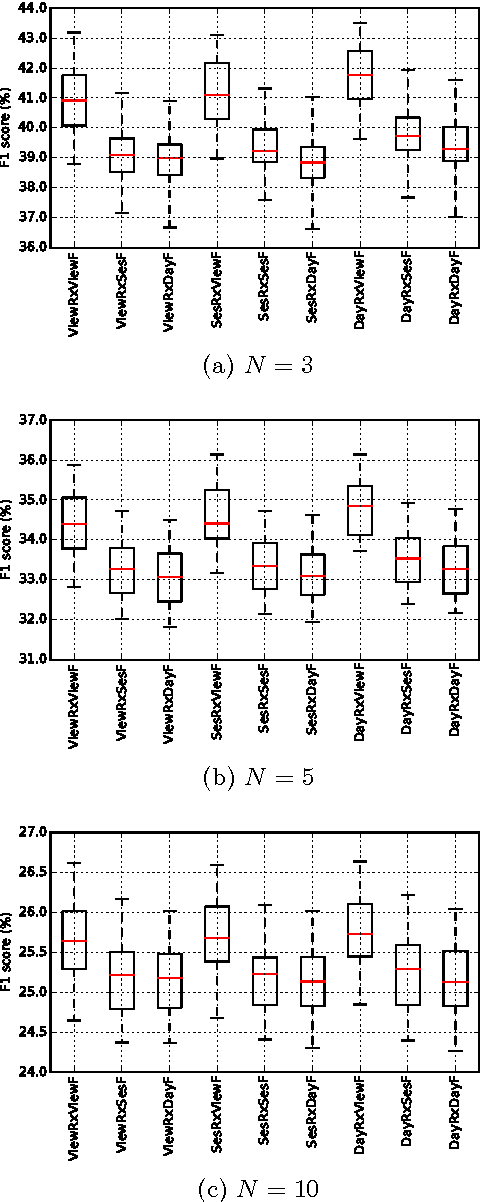
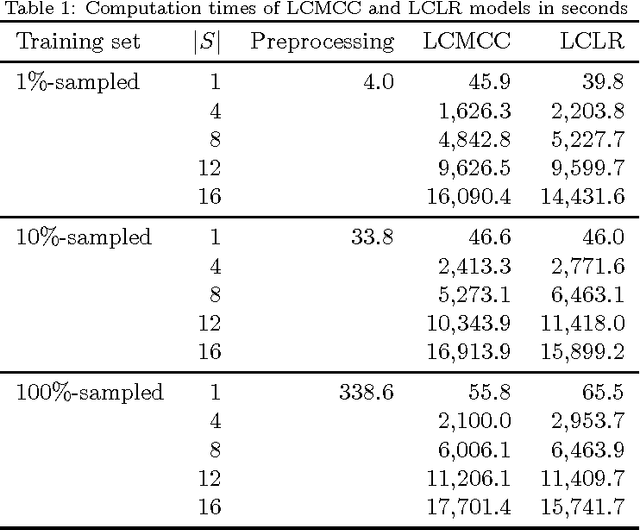
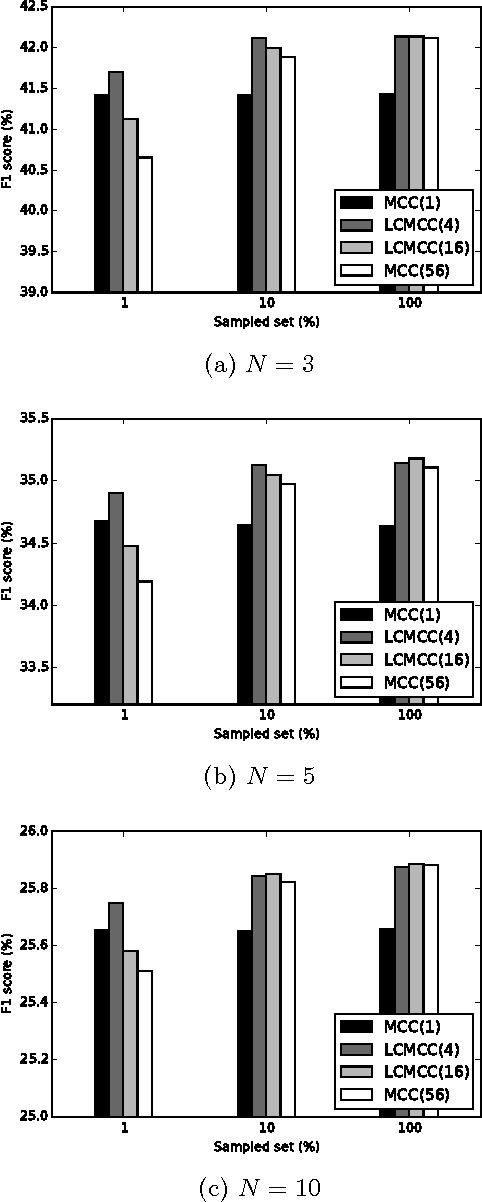
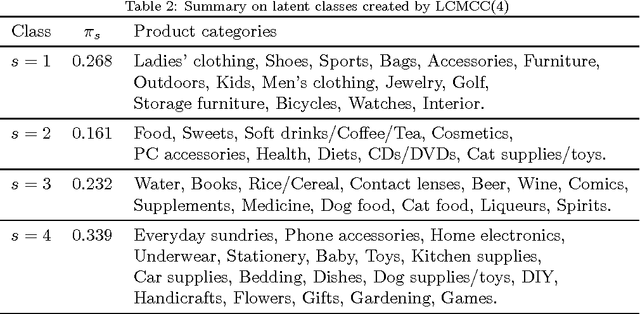
Abstract:This paper analyzes customer product-choice behavior based on the recency and frequency of each customer's page views on e-commerce sites. Recently, we devised an optimization model for estimating product-choice probabilities that satisfy monotonicity, convexity, and concavity constraints with respect to recency and frequency. This shape-restricted model delivered high predictive performance even when there were few training samples. However, typical e-commerce sites deal in many different varieties of products, so the predictive performance of the model can be further improved by integration of such product heterogeneity. For this purpose, we develop a novel latent-class shape-restricted model for estimating product-choice probabilities for each latent class of products. We also give a tailored expectation-maximization algorithm for parameter estimation. Computational results demonstrate that higher predictive performance is achieved with our latent-class model than with the previous shape-restricted model and common latent-class logistic regression.
 Add to Chrome
Add to Chrome Add to Firefox
Add to Firefox Add to Edge
Add to Edge